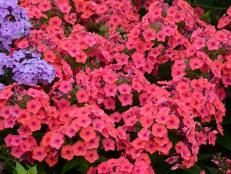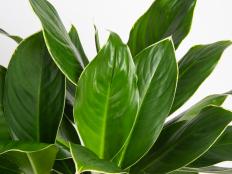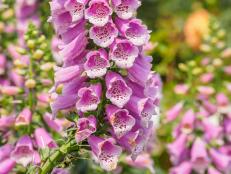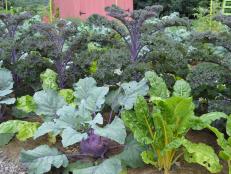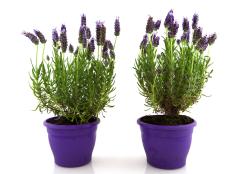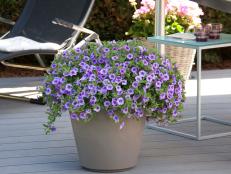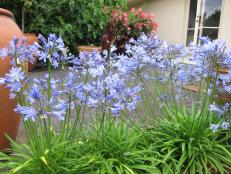Japanese Garden Plants
Rely on the right plants to create a richly beautiful experience and ambience in your Japanese garden.
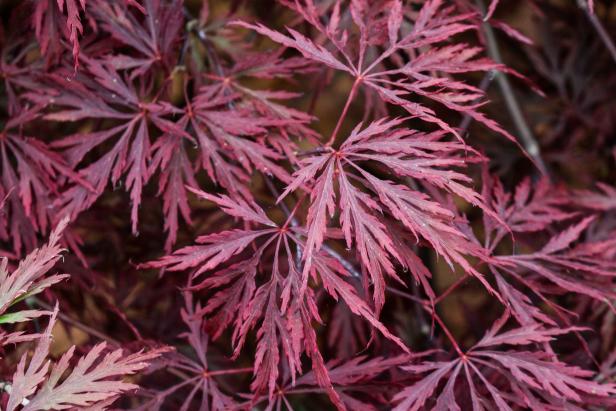
Weave a spell of simplicity in your yard with a Japanese garden. These sparsely appointed spaces create a place for quiet contemplation and reflection with their blend of rocks, water and plants. Accent the hardscape in your Asian-inspired space with Japanese garden plants. These plants can hail from any group, including trees, shrubs, annuals, perennials, natives and ornamental grasses. Make your selections based on plant form and traditional Japanese garden plant symbolism.
A true Japanese garden seeks to emulate the natural world, striving to capture and re-create a natural scene almost in miniature. Rocks in the garden represent mountains or islands, and pebbles may symbolize water. Trickling water features and ponds are also part of the scenery. Trees, shrubs and low-growing plants complete the garden.
Japanese garden plants play key roles in this garden design and are usually chosen for their symbolism. Pine trees and other evergreens represent longevity and stability. Their evergreen nature takes center stage in winter months, when other plants in the garden are dormant. In a small garden space, focus on small evergreens, such as dwarf mugo pine (Pinus mugo pumilio), Baby Blue sawara cypress (Chamaecyparis pisifera ‘Baby Blue’) or Black Dragon Japanese cedar (Cryptomeria japonica ‘Black Dragon’).
Bamboo is a must-have Japanese garden plant. Some types are evergreen in some climates. In other regions, the leaves drop in autumn, and the jointed stems stand out through winter. Like pines, bamboo represents longevity and also happiness.
Bamboo falls into two categories: clumping (non-running) and running. Clumping types have tamer natures that won’t overrun modern, small garden spaces. Running bamboo will quickly overtake a garden. Research bamboos before choosing ones for your garden. Some have colorful stems, some have beautiful foliage, and some are cold-hardy.
The classic Japanese maple (Acer palmatum) belongs in a Japanese garden as a reminder of the changing seasons—in the year and in life. Look for Japanese maples with a variety of eye-catching growth features. Aoyagi Japanese maple (Acer palmatum ‘Aoyagi’) unfurls chartreuse foliage, while Black Japanese maple (Acer palmatum ‘Nigrum’) has leaves that shift from black-red to deep purple-red. Coral bark Japanese maple (Acer palmatum ‘Sangokaku’) has brilliant coral-red bark that sparkles against winter snow.
Flowering plum trees are prized Japanese garden plants because they’re one of the first to bloom in spring. As a result, they represent the esteemed qualities of patience and vigor. Flowering almond (Prunus glandulosa ‘Rosa Plena’), a blooming shrub, also greets spring early with blossom-bedecked boughs. Flowering cherry and crabapple trees are also treasured Japanese garden plants for the color they bring to spring scenes.
Color in a Japanese garden is fleeting, not a permanent fixture. It’s a gentle reminder of the brief nature of life, and the blooms serve to inspire reflection and self-examination. Commonly used Japanese garden plants that unfurl flowers include peony, chrysanthemum and, near water features, Japanese water iris (Iris ensata).
Flowering shrubs include azalea, camellia and hydrangea, all of which provide strong winter interest. Colorful, fragrant wisteria vine is another must-have bloomer frequently found in Japanese gardens. Its dangling flower clusters, reaching tendrils and twisted vines add exquisite beauty to the garden.







